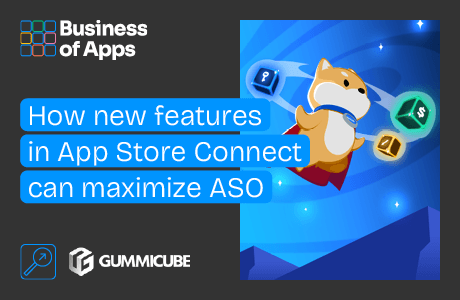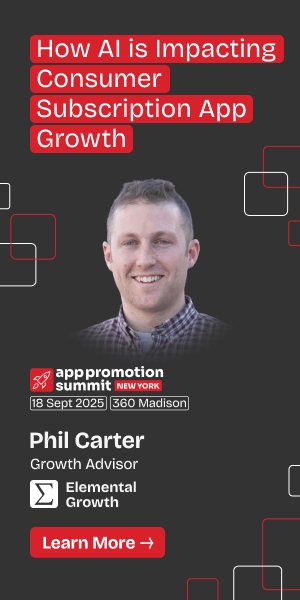Apple Search Ads is now Apple Ads and this is no small name change. It is the equivalent of the shift from Google AdWords to Google Ads years ago. Just like when Google expanded beyond search advertising, this signals a much broader evolution in Apple’s ad network strategy.
The rebrand reflects Apple’s broader ambitions to expand into multiple ad placements across its ecosystem. Ads don’t just appear in search results anymore, but also in high visibility areas like the Today Tab and across app product pages.
For app developers and marketers, understanding this shift is critical. As competition in the App Store intensifies and the cost of user acquisition continues to rise, visibility within the store is everything. Apple Ads is an important tool for making sure your app reaches the right audience at the right time, and it is more than just an ad network.
Used strategically, Apple Ads can directly support and enhance your App Store Optimization (ASO) efforts. No other channel can do that, because no other ad network is connected to Apple’s store algorithms in the same way.
Let’s explore what Apple Ads is today, where it’s likely headed, and how you can use it to strengthen your ASO approach. Whether you’re launching a new app, scaling an existing one, or optimizing to stay ahead in a competitive market.
Apple Ads explained: A new era of app advertising
Apple Ads is Apple’s official advertising solution for increasing app visibility within the App Store. As competition grows and thousands of new apps are added daily, standing out has become increasingly difficult. Apple Ads addresses this by offering high impact placements such as at the top of search results and the Today Tab, targeting users who are already in the mindset to discover and download new apps.
The platform is divided into two main categories: Apple Ads Basic and Apple Ads Advanced.
Apple Ads Basic: Simplified and automated app campaigns
Apple Ads Basic is designed for smaller developers or those who want a hands-off approach. You set your budget and cost-per-install (CPI) goal, and Apple automates the rest—ad placements, keyword targeting, and campaign optimization.
It’s a great option for teams without the bandwidth to manage complex campaigns. However, it lacks customization and in-depth performance reporting. It’s all about ease and predictability. If you’re looking for more control over where and how your ads are shown, you should consider Apple Ads Advanced.
Payments are silently stalling startup growth
High fees. Failed payments. Single point of failure. Our report shows why payments are holding startups back and how to fix it.
Download The ReportApple Ads Advanced: Control, flexibility, and detailed insights
Apple Ads Advanced offers full control with a deeper level of customization. With this version, you can select keywords, refine your audience, and tailor your creatives to specific user segments. It’s more hands-on and ideal for developers or marketers who want granular control over their campaigns and need robust reporting to track performance.
Apple Ads Advanced also features more flexible pricing and budget options, plus detailed performance insights broken down by keyword, audience, and placement. It’s the preferred choice for developers or marketers looking to take a data-driven approach to user acquisition.
Apple Ads advanced placements
Today Tab ads are ad placements on the front page of the App Store. This is where all users land when they open the App Store. Ads consist of app name, icon, and subtitle connecting to a custom product page (CPP) that needs to be set up as the tap destination. Please keep in mind that the CPP that is being used will animate in the background of the ad, in color behind the app icon. Deep linking to a direct spot in your app is possible and highly recommended.
Search Tabs ads are ad placements that display on screen when users click the search icon and are about to type in their search request. Ads consist of app name, icon, and subtitle connecting to either a default product page or a custom product page as the ad’s destination.
Search Results Ads is the traditional ad placement that Apple Ads is known for. These are the advertisements that appear on top of specific targeted keywords in the App Store which closely resemble what web marketers would refer to as SEM.
You’ll be able to target specific keywords and search terms, create ad variations, and even test different custom product pages where users will land after they click an ad to optimize conversion for various audiences. Ads consist of app name, icon, subtitle, and screenshots or video connecting to either a default product page or a custom product page as the ad’s destination.
Product Pages are ads that appear inside the store listings of other apps, further demonstrating how much of an eCommerce platform the App Store really is.
Just like consumers would expect to see on Amazon, Apple has introduced “other apps you might like” and in this case they are sponsored by advertisers through the Apple Ads platform. Ads consist of app name, icon, and subtitle connecting to the default product page as the ad’s destination. Anyone still talking about ASO as if it is SEO is so far behind they are a danger to themselves.
What this means for your aso strategy
The shift from Apple Search Ads to Apple Ads marks a strategic pivot. Apple has moved toward a multi dimensional ad network, and your ASO strategy needs to evolve with it.
Now that ads appear beyond search results, your app is being seen by users who aren’t actively searching. That means metadata, screenshots, and icons are on display in more places, raising the stakes for your creative and keyword strategy.
What does that mean in practice? It means ASO and paid campaigns need to be more tightly aligned than ever before. Apple Ads isn’t just an ad network – it has emerged as a critical A/B testing ground to optimize your overall performance within the App Store.
You can use Apple Ads to:
- Test targeted keywords before locking them into your metadata
- Measure your conversion rate per keyword or group of similar terms
- A/B test store listing variations to understand how specific messaging or imagery converts across specific terms and audiences
- Identify high-performing creatives and messaging that resonate with new audiences
- Understand which placements drive the most engaged users
These insights should directly feed back into your ASO strategy. Whether you’re adjusting your screenshots or rethinking your keyword focus, the data from Apple Ads makes your organic efforts smarter.
Aligning paid ads with organic ASO efforts
While success in ASO is not pay to play, achieving alignment across your ASO and Apple Ads strategies enhances the performance of your app for the entire store ecosystem.
Apple Ads helps you test the elements that drive installs before fully committing them to your App Store listing. For example, Custom Product Pages (CPPs) let you showcase different creatives to different user segments, aligning ad creatives with audience intent. Think of this like being able to A/B test at a keyword level.
As a best practice, we connect the dots between performance data and listing optimization. By aligning Apple Ads with our ASO services, we ensure paid and organic traffic support each other for maximum visibility and conversion.
Growth at every stage: How Apple Ads helps every app
Apps at every stage of their lifecycle can benefit from Apple Ads.
Gaining initial app visibility
It’s nearly impossible for a new app to gain traction without the support of Apple Ads. In order to rank for keywords in the store, your app needs relevancy and support. Without the support of mobile marketing in some capacity, your app will be reliant on the App Store algorithm, which will display your app wherever it sees fit. Ranking for keywords in competitive positions could take months. With Apple Ads, you can speed up this process and put your app in front of interested users quickly.
Scaling up and refining your strategy
Your campaigns should adjust as quickly as your app changes. As you continue to grow, understanding your top features from a user-engagement standpoint can help drive the keyword targeting you have in place. Testing different keywords will allow you to display for more terms within your campaigns, increasing your existing visibility.
Your campaigns should also evolve with your organic App Store Optimization strategy. For new terms you target in your metadata, you can look at bidding on these same terms within the campaigns to understand relevancy and performance.
If keywords perform well in one platform, you can always consider incorporating these terms into the other to maximize targeting and performance.
Staying competitive in the App Store
Even if your app has been in the App Store for years on end, you still need Apple Ads to help defend your current positions. Advanced offers different tools that allow you to track keyword performance, conversion and relative keyword popularity amongst other paid terms. Looking at these daily gives you the data you need to make the necessary adjustments to maximize campaign and App Store performance.
Incorporating Custom Product Pages can strengthen your competitive edge. You can tailor your app creative to better align with the different keywords you’re bidding on, effectively giving your app an advantage of being more visually relevant for popular search terms.
Continuous app improvement
ASO is never “done.” Apple Ads provides a continuous stream of data you can use to improve App Store performance. Apple Ads can give you the data you need to optimize regularly, keeping your app relevant and visible.
Integrating paid strategies with organic efforts ensures that you never fall behind. Whether you’re refining your keyword list, testing new creatives, or adjusting to market changes.
Final thoughts
Apple’s move to rebrand from Apple Search Ads to Apple Ads isn’t just a simple change in branding. This change marks a pivot in the ways to maximize visibility in the App Store. From search based advertising to display opportunities throughout the store, there are many more opportunities to not only acquire new users but also learn how to improve the performance of your app in the store.
Whether you’re launching a new app, scaling up an existing one, or optimizing for long-term success, Apple Ads provides critical insights that can make a significant impact on your ASO strategy.











